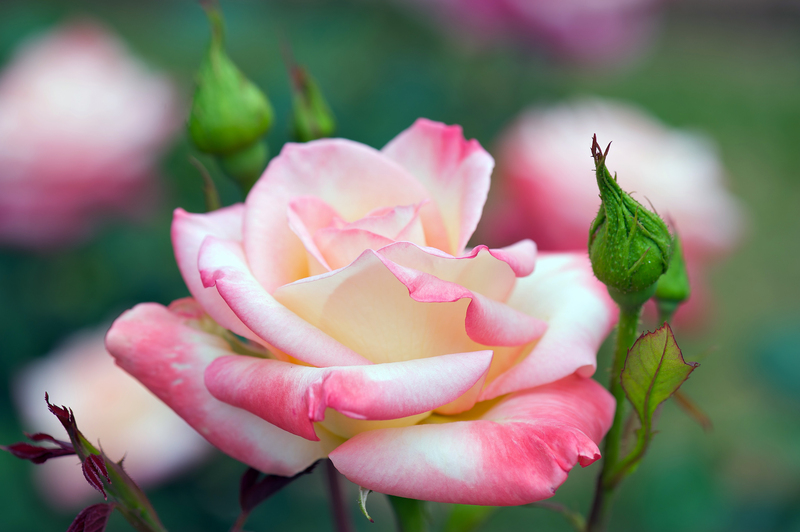Vertical Gardening: Urban Gardens in the Sky
Posted on 28/08/2025
Vertical Gardening: Urban Gardens in the Sky
Vertical gardening is transforming otherwise plain and overlooked urban spaces into vibrant, eco-friendly oases that climb skyward. As cities expand and ground-level green areas shrink, innovative gardeners and architects are turning walls, balconies, and rooftops into lush, living landscapes. In this comprehensive article, we'll explore the ins and outs of urban vertical gardening, its benefits, how you can start your own vertical garden, as well as the trends shaping this green revolution.

What is Vertical Gardening?
Vertical gardening, often described as "gardens in the sky," is the practice of growing plants upwards using vertically stacked layers or structures. Instead of traditional horizontal beds, plants are cultivated on vertical surfaces like walls, fences, trellises, and even specially designed towers. This innovative approach allows city-dwellers, homeowners, and businesses to incorporate greenery in urban environments where horizontal space is scarce.
Why Vertical Gardening is Gaining Popularity in Cities
The rise of urban vertical gardens is a direct response to increasing urbanization. With more than half the world's population living in cities, available land for traditional gardens is becoming limited. Vertical gardening offers practical and aesthetic solutions for those who crave the beauty and benefits of nature without sacrificing precious square footage.
- Maximizes limited space, perfect for apartments and urban homes
- Improves air quality - plants naturally filter pollutants and release oxygen
- Enhances well-being by reducing stress and boosting mental health
- Offers energy efficiency by cooling buildings and reducing the urban heat island effect
- Encourages local food production via edible vertical gardens
The Benefits of Urban Vertical Gardens
Gardens in the sky have much more to offer than just eye-catching aesthetics. Let's delve deeper into how vertical gardening positively impacts the environment, our communities, and even our personal health.
Environmental Impact
- Air purification: Plants trap dust, absorb pollutants, and improve oxygen levels, creating fresher and healthier air in cities.
- Thermal insulation: Vertical gardens act as natural insulators for buildings, reducing heating and cooling needs and thus saving energy.
- Stormwater management: These gardens absorb rainwater, reducing runoff and helping prevent urban flooding.
- Increased biodiversity: Urban gardens provide critical habitats for pollinators like bees and butterflies, and support urban wildlife.
Wellness and Urban Lifestyle
- Mental health: Regular interaction with plants has been clinically shown to reduce anxiety and improve mood.
- Physical activity: Even tending to a small vertical garden encourages movement and engagement.
- Social cohesion: Community-driven vertical gardens foster collaboration and shared purpose in urban neighborhoods.
- Aesthetic value: Green walls and living facades turn concrete jungles into inviting, beautiful cityscapes.
Types of Vertical Gardens for Urban Spaces
Not all vertical gardens are created equal! There are several popular styles and systems, each suited to different spaces, needs, and budgets. Let's take a closer look:
- Green Walls (Living Walls): Large, architecturally-integrated installations often seen on building exteriors and corporate interiors.
- Pocket Planters: Small fabric or modular pouches hung on walls; perfect for herbs and decorative flowers.
- Trellised Gardens: Vining plants trained to grow up trellises or lattices on balconies and patios.
- Vertical Towers: Freestanding or wall-mounted columns stacked with pockets for growing vegetables or flowers.
- Hydroponic and Aeroponic Systems: Soil-free vertical setups using nutrient-rich water, ideal for urban farms and food production.
How to Start Your Own Vertical Garden
Ready to create your own urban garden in the sky? Whether you have a tiny balcony or a blank terrace wall, vertical gardening is accessible to everyone. Here's a step-by-step guide to get you started:
Step 1: Choose the Right Location
- Sunlight: Most plants need at least 4-6 hours of direct sunlight. South-facing walls or balconies are ideal in the Northern Hemisphere.
- Accessibility: Pick a spot that's easy to water and maintain.
- Structure: Make sure your chosen wall, fence, or railing can support the weight of a vertical garden.
Step 2: Select a Vertical Gardening System
- Wall panels or grids for living walls
- Tower planters for freestanding installations
- Pocket planters for smaller-scale projects
- DIY repurposing - upcycle old pallets, shoe organizers, or gutters as planting vessels
Step 3: Choose Suitable Plants
When cultivating a vertical vegetable garden or decorative wall, select plants that suit your climate and the amount of available sunlight. Consider:
- Herbs: Basil, thyme, parsley, mint, chives
- Leafy greens: Lettuce, spinach, arugula, kale
- Flowers: Annuals like petunias, nasturtiums, pansies, and fuchsias
- Succulents: Low-maintenance and excellent for sunny, dry locations
- Vining plants: Beans, peas, strawberries, and tomatoes trained up trellises
Step 4: Set Up Irrigation and Fertilization
Consistent watering is crucial for vertical gardens, especially in urban settings where wind and sun exposure can dry out plants quickly. Drip irrigation systems or self-watering planters are ideal, but regular hand-watering works for smaller setups. Use slow-release or organic fertilizers to keep plants healthy and vigorous.
Step 5: Maintenance and Troubleshooting
- Monitor moisture levels - don't let roots dry out
- Trim and prune regularly for healthy growth and to prevent overcrowding
- Check for pests and diseases - organic pest control works best in urban environments
- Refresh soil or medium annually to replenish nutrients
Vertical Gardening Design Inspiration
Whether your aim is to grow your own produce, beautify a dull space, or simply reconnect with nature, vertical gardens offer infinite possibilities. Here are a few creative urban gardening ideas for every space:
- Palette Planters: Recycled wooden pallets lined with landscape fabric create rustic, budget-friendly living walls.
- Succulent Walls: Mix colorful succulents for a low-water, drought-tolerant display.
- Edible Towers: Grow salad greens, strawberries, and herbs in compact towers on balconies or patios.
- Shady Green Walls: Use ferns, moss, and shade-loving plants to brighten indoor foyers and shaded courtyards.
- Artistic Installations: Combine trailing vines and flowering plants to craft colorful living murals.
Urban Examples: Iconic Vertical Gardens Around the World
Cities across the globe are embracing vertical gardening as more than just a trend. Some of the world's most striking urban gardens include:
- One Central Park, Sydney: Famous for its 1,120 square meter vertical garden, this residential tower is a symbol of sustainable high-rise living.
- Musee du Quai Branly, Paris: Patrick Blanc's living wall covers an entire museum facade, blending art, architecture, and botany.
- The Green Wall at CaixaForum, Madrid: A vertical botanical masterpiece featuring over 250 plant species on a public building.
- Bosco Verticale, Milan: Known as "Vertical Forest," these twin residential towers use over 20,000 trees and shrubs to clean the city air and provide natural climate control.
Vertical Gardening and Sustainable Cities
The skyward expansion of urban gardens is vital for building resilient, sustainable cities. Vertical gardening not only meets the human need for nature but also addresses pressing urban challenges such as:
- Air pollution mitigation
- Urban food security
- Cooling and energy efficiency
- Biodiversity conservation
Moreover, as climate change accelerates and cities face higher temperatures and unpredictable weather, vertical gardens help buffer the impact, making urban areas more livable and sustainable.

Frequently Asked Questions About Vertical Urban Gardens
Is vertical gardening suitable for small apartments?
Absolutely. Even a tiny balcony or bright wall is sufficient for a miniature urban garden in the sky. Pocket planters, railing-mounted boxes, and compact towers make it possible to maximize yield and beauty in limited spaces.
Can you grow food in vertical gardens?
Many vertical gardens are designed specifically for growing food. Leafy greens, herbs, strawberries, and compact vegetable varieties all thrive in vertical systems, making homegrown, organic produce accessible to urban dwellers.
Do vertical gardens require a lot of maintenance?
Maintenance depends on the system and plants chosen. Drought-tolerant succulents and automated irrigation systems can reduce labor, while edible gardens may need more attention. However, most city gardeners find maintenance manageable and rewarding.
How much does it cost to install a vertical urban garden?
Costs vary widely, from DIY setups under $50 using recycled materials, to professionally installed living walls that can cost thousands. Most people start small, expanding as time, budget, and space allow.
Conclusion: The Sky's the Limit for Vertical Gardening
As urban life continues its upward trajectory, the importance of integrating nature into our built environments cannot be overstated. Vertical gardening - be it on a high-rise, a kitchen wall, or a shaded terrace - brings the beauty, health, and sustainability of plants to where we live and work. Urban gardens in the sky are more than a gardening fad; they are a vital part of the future cityscape, enriching our daily lives and restoring balance between humanity and the natural world.
With creativity, a little planning, and a passion for greenery, anyone can join the vertical garden revolution. Let your imagination climb skyward and transform your living space - and your city - into a greener, healthier, and more beautiful place for all.

